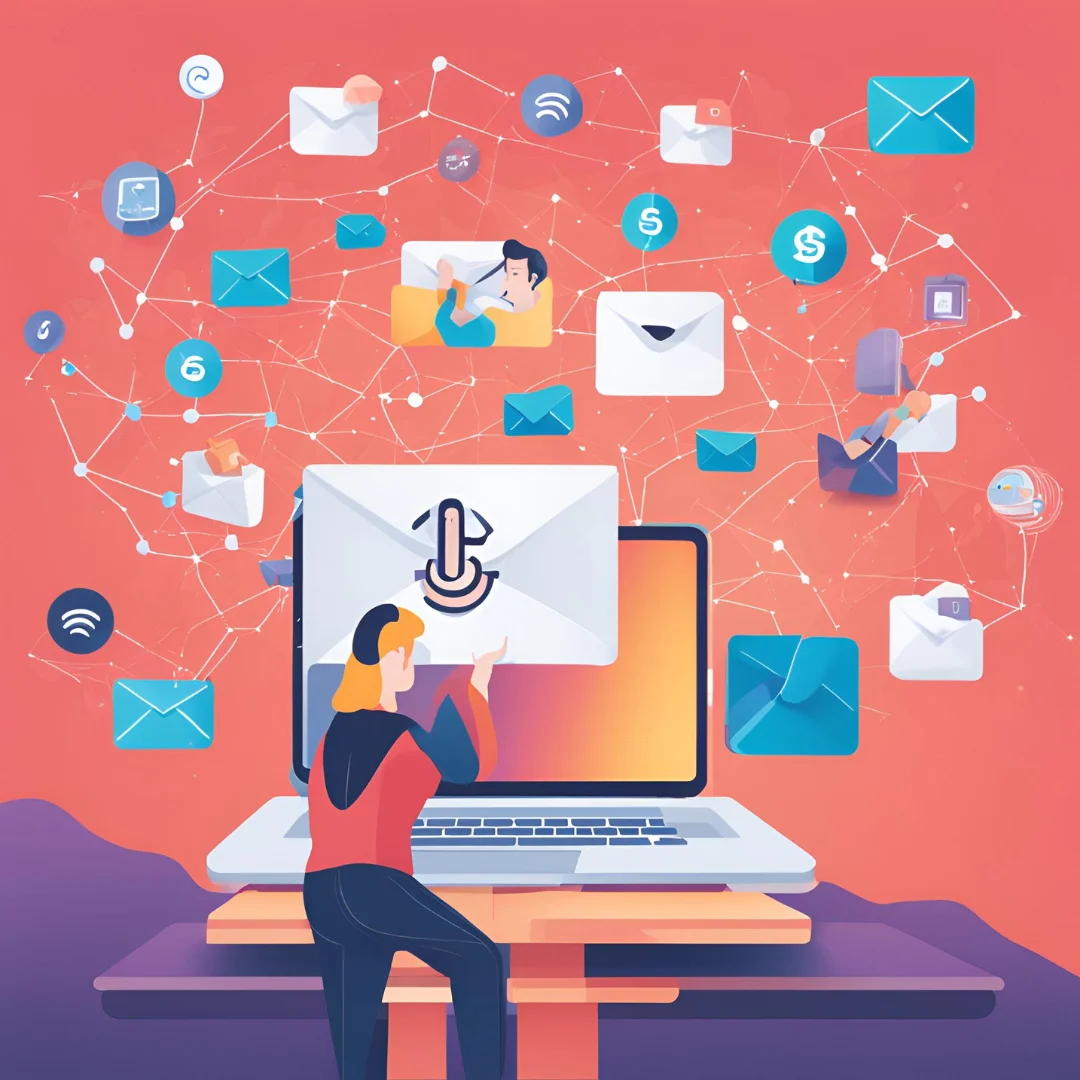Over time, email marketing has seen significant change and is now a key component of digital marketing plans. Marketers are confronted with both fresh opportunities and challenges as artificial intelligence (AI) revolutionizes content development. Marketers can now produce hyper-personalized communications, design customized emails at scale, and do more efficient data analysis thanks to AI-powered content generating technologies. However, careful execution is also necessary when integrating AI into email marketing to guarantee that messages are genuine and connect with recipients.
This blog will discuss how artificial intelligence (AI) is changing email marketing, its advantages and disadvantages, how to include AI into your email campaigns, and ethical issues to balance automation and human interaction.
1. The Evolution of AI in Content Generation for Email Marketing
From simple automation tools to complex language models, AI's content creation skills have advanced. At first, AI was mostly utilized for data insights, audience segmentation, and email scheduling and delivery. These days, sophisticated AI tools can:
-
Generate text that mimics human language, adapting tone and style.
-
Personalize content by analyzing data on user behavior, preferences, and demographics.
-
Predict audience behavior to determine the best time to send emails, optimal subject lines, and effective content strategies.
-
Optimize campaigns through ongoing learning, constantly refining content based on engagement metrics.
Thanks to these developments, companies can now instantly customize email content, giving users a flawless experience and increasing the effectiveness of their marketing campaigns.
2. Key Advantages of AI Content Generation in Email Marketing
The use of AI in email marketing comes with several distinct benefits, particularly in terms of efficiency, personalization, and scalability.
2.1 Efficiency and Time Savings
Language models and other AI-powered content generating technologies enable marketers to swiftly create email content without having to write each piece by hand. Teams can concentrate on strategy and creative direction when email campaigns can be drafted, edited, and finalized at scale.
2.2 Hyper-Personalization
Large datasets can be analyzed by AI algorithms to learn about the preferences, purchasing patterns, and engagement history of specific subscribers. Marketers can send emails that are specifically customized for each recipient thanks to this study. Personalization can be as simple as making product recommendations based on previous purchases or even changing the email's tone to fit the communication preferences of the recipient.
2.3 Data-Driven Decision Making
AI enables marketers to make well-informed decisions by analyzing the performance of previous email campaigns and forecasting future results. From recommending subject lines to identifying the best times to communicate, AI can identify tactics with the highest chance of interaction by analyzing data trends.
2.4 Enhanced Segmentation
In email marketing, segmentation is essential. By identifying more precise audience segmentation based on a variety of data sources, including browsing patterns, past purchases, and engagement frequency, artificial intelligence (AI) enhances this process. Campaigns can be more precisely targeted thanks to these information, increasing conversion rates.
2.5 Continuous Optimization
Over time, AI systems gain knowledge and become more sophisticated, offering ongoing insights that aid in campaign improvement. Because of this ongoing optimization process, email content can change in response to real-time input, guaranteeing that communications are engaging and relevant.
3. Challenges and Drawbacks of AI-Generated Content in Email Marketing
Although AI content creation has numerous benefits, there are drawbacks as well. To effectively use AI in email marketing, one must be aware of these disadvantages.
3.1 Lack of Authenticity
Content produced by AI might not have the same emotional depth and authenticity as writing by humans. If recipients believe the communication was created by a machine rather than a human, they can become disinterested. AI may find it difficult to recreate the profound grasp of human emotion needed to craft a message that speaks to people on a personal level.
3.2 Over-Personalization Risks
Although customisation has its benefits, too much of it may cause discomfort for the recipients. Users may perceive the email as intrusive or even wonder about the morality of the company's operations if they believe their data is being examined excessively.
3.3 Dependence on Data Quality
AI's performance depends on the caliber and volume of data it is fed. Incomplete or inaccurate data can result in poorly targeted marketing and faulty findings. Because of this dependence on data quality, businesses must have strong data management procedures in place to guarantee that their AI technologies operate at their best.
3.4 Content Standardization
AI-generated content could unintentionally produce "sameness" in messaging across several businesses or campaigns. Emails run the risk of becoming formulaic, lacking uniqueness and originality, when several businesses utilize comparable AI techniques.
3.5 Ethical Concerns
AI-driven marketing raises ethical concerns, especially those pertaining to transparency and data privacy. Marketers need to be open and honest about how they use data and refrain from deceiving consumers with excessively automated messages that can be interpreted as dishonest.
4. Integrating AI into Your Email Marketing Strategy
Businesses should take a strategic strategy that takes into account both the advantages and drawbacks of AI content development if they want to maximize AI's potential in email marketing.
4.1 Start Small with Automation
Start by automating easier chores like email scheduling, audience segmentation, or using AI to recommend the best times to send emails if you're new to AI-powered email marketing. This will help you understand how AI can increase productivity without completely letting go of your email content management.
4.2 Leverage AI for Content Suggestions, Not Final Drafts
Use AI as a tool to produce ideas or content drafts rather than depending on it to write the full email. After that, human editors can improve and polish the AI-generated material to make sure it stays authentic and fits with your brand voice.
4.3 Focus on Personalization, Not Over-Personalization
Although personalization is an effective tool, it's crucial to find a balance. Avoid going overboard with hyper-personalization, which could make recipients feel invasive, and instead concentrate on pertinent data elements, such as prior purchases or content preferences.
4.4 Combine AI with Human Creativity
While AI systems are excellent at data analysis and process optimization, human creativity is still necessary for creating original ideas and captivating stories. Utilize your team's creativity to develop the messaging and storytelling components of email marketing while letting AI handle the data-driven parts.
4.5 Prioritize Transparency and Consent
Be open and honest about how you acquire data and get permission to utilize it in order to gain the audience's trust. Emphasize that privacy is a top concern and explain in detail how AI affects their email experience.
Conclusion
In email marketing, AI content creation offers fascinating chances to boost productivity, scale personalization, and optimize campaigns using real-time data. Businesses can use AI as a potent tool without sacrificing ethics or authenticity by being aware of its advantages and disadvantages. The future of email marketing will be determined by how well automation and human interaction are balanced as AI technology develops.




